The effects of El Niño is not the only reason behind Europe's devastating floods
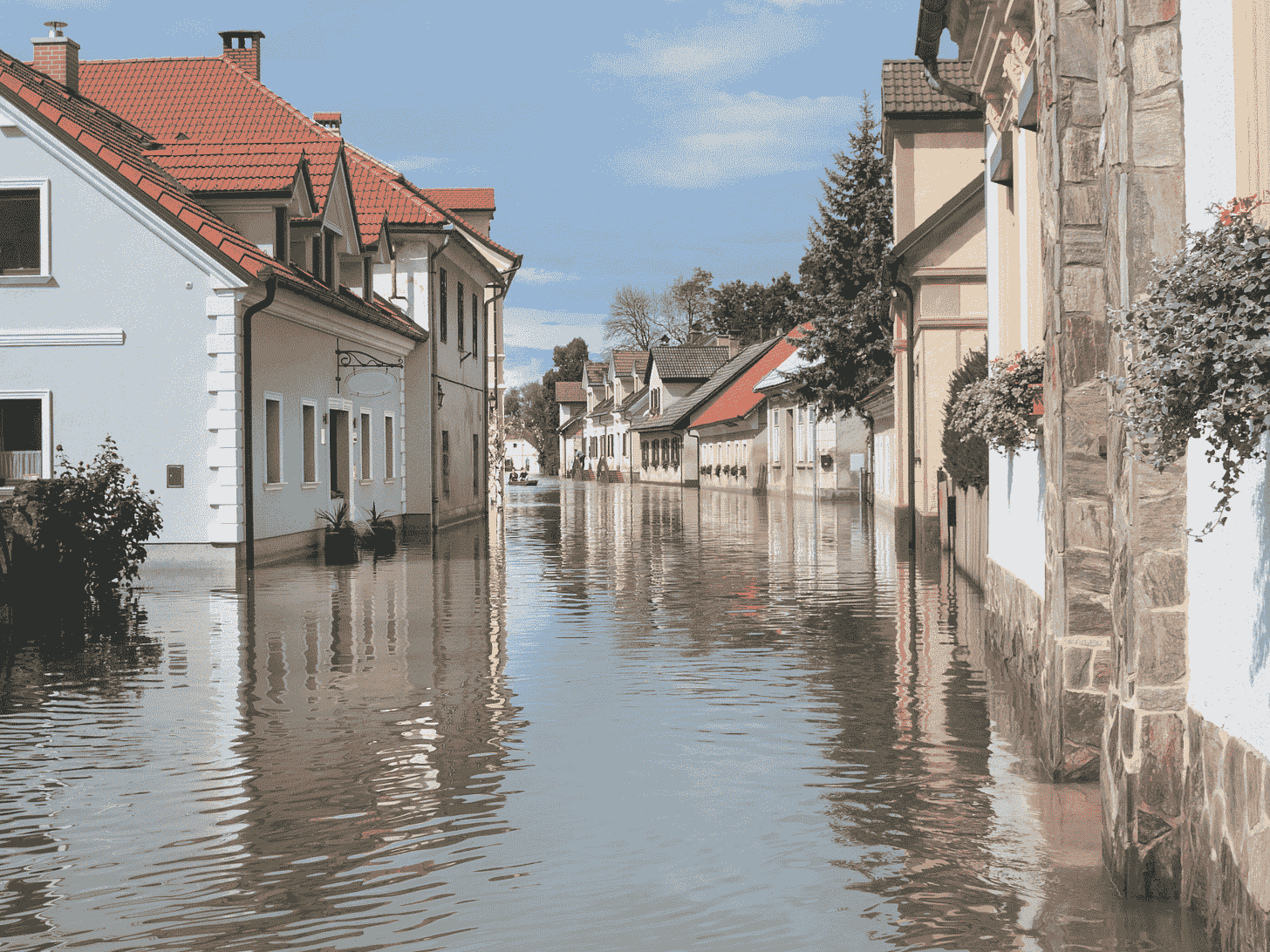
Europe still hasn’t fully recovered from the horror of the floods that claimed more than 200 lives across Germany, Belgium, and the Netherlands in 2021. Again, in the last few weeks, floods have hit parts of Germany and Italy, but the effects of El Niño may not be the only culprit.
The WMO and the EU climate Copernicus have revealed that since 1991 Europe has been experiencing warming at twice the global average. Although this gradual shift in temperature is due to climate change, it is also partly attributed to the transitional phase between El Niño and La Niña.
Effects of El Niño and La Niña on weather
El Niño is a natural phenomenon that contributes to increasing ocean temperatures. It warms up the atmosphere, affecting weather patterns worldwide, such as increased rainfall in the tropical Pacific Ocean. El Niño’s effects typically lasts over several months, and this year, it is expected to break the record temperature as a result.
La Niña on the other hand is opposite to El Niño and creates favorable conditions for hurricane development and intensification. NOAA's forecast suggests that there is a 55% chance of La Niña developing from June to August and a 77% chance from September to November this year.
El Niño and La Niña impact rainfall as well as ocean temperatures by resulting in droughts or flooding, depending on which cycle happens and when. For example, drought is mostly linked to El Niño, whereas floods are linked to La Niña. However, the global weather system has become so complex due to climate change that this isn’t always the case.
In Europe, El Niño triggers colder and drier winters in the north and wetter winters in the south. This causes severe heatwaves and intensified storms.
Related: Deadly heat wave shrinks work efficiency
However, El Niño is not to be blamed alone
The complexity of the weather events is that the weather in one region can have a "domino effect" globally. This also means that increased rainfall in one area can lead to decreased rainfall in another. But these effects cannot be solely due to El Niño.
WMO Secretary-General Celeste Saulo says, “January 2024 recorded the highest sea surface temperature for any January on record. This is concerning and cannot be attributed solely to El Niño. Although ocean surface temperatures in the equatorial Pacific indicate the presence of El Niño, warming temperature is mostly due to increasing greenhouse gas emissions. Therefore, the end of El Niño will not put a stop to extreme weather events. We should tackle it by reducing emissions.”

Figure 1 shows the data on the global mean sea level since 2010. By January 2023, the mean sea level had increased by 98 millimeters (mm) compared to 49.5 mm in 2010.
The global average temperature and global CO2 emissions show similar trends. As the CO2 emissions increase, so does the average temperature. This melts glaciers, resulting in the expansion of water and sea levels rise.
Related: Heatwaves accelerate glaciers' rapid meltdown in Europe
A warmer world leads to disaster
A group of scientists concluded that the destructive floods across Europe in 2021 were due to climate change. Because it made the rainfall between 3% and 19% more intense and 1.2 to nine times more.
With the rise of every 1°C in temperature, the air's ability to possess moisture increases by 7%. This increases the chances of rainfall. Furthermore, global warming accelerates the evaporation of water, resulting in more frequent and severe storms.
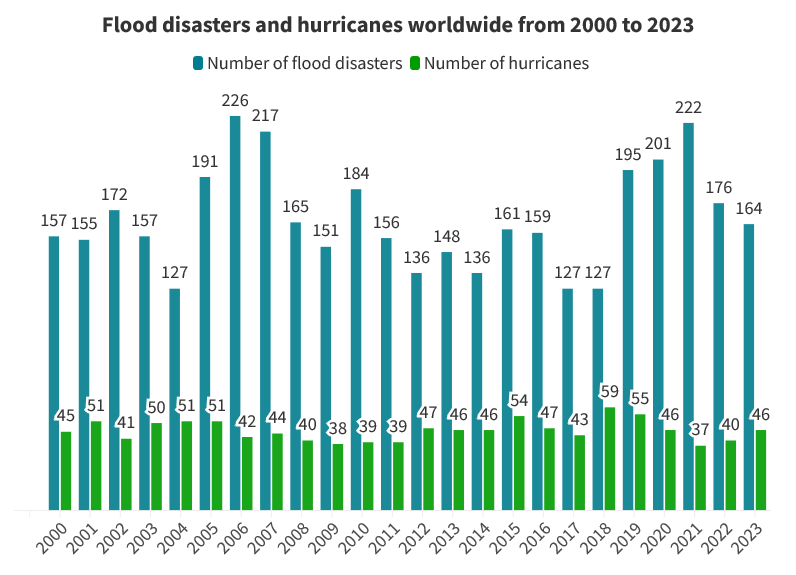
Therefore, as the temperature continues to increase, the risks associated with hurricanes, droughts, and extreme rainfall become more common, leading to flooding.
In 2023, the world documented 164 flood disasters and 46 hurricanes (Figure 2). Since 2000, the year 2006 holds the record for the highest number of flood disasters registered with 226.
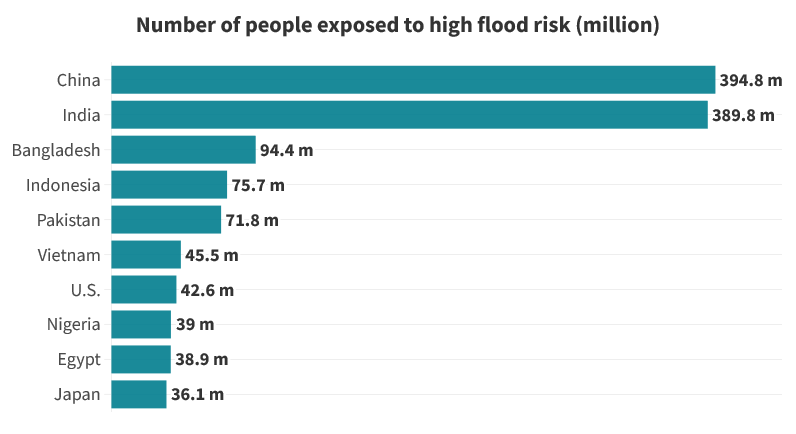
Figure 3 shows the top 10 countries facing flood risks with the number of people. Likewise, Figure 4 combines how many people in terms of percentage are living in poverty (at USD 1.90/day) and are facing high flood risk. South Sudan stands out with 28%.
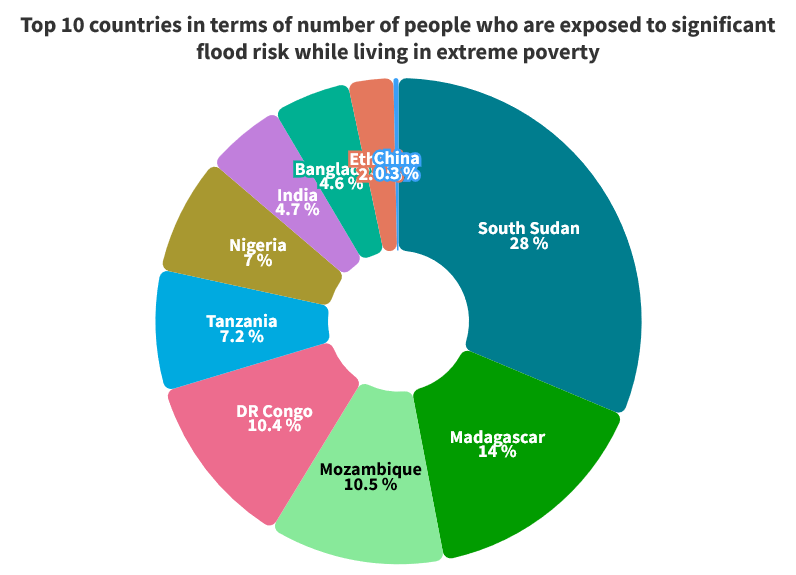
The insurance market is growing
As citizens become increasingly aware of the financial consequences of flood damage, the demand for flood insurance is rising.
Related: Climate-linked disasters costing billions: insurers urged to act to avoid catastrophe
To meet these challenges, insurance companies are offering inventive flood insurance plans to their customers. They are using sophisticated data analytics and modeling methods to provide more precise flood risk assessments. As a result, the global insurance market is forecasted to grow at a CAGR of 16.1% between 2023 and 2028 (Figure 5).
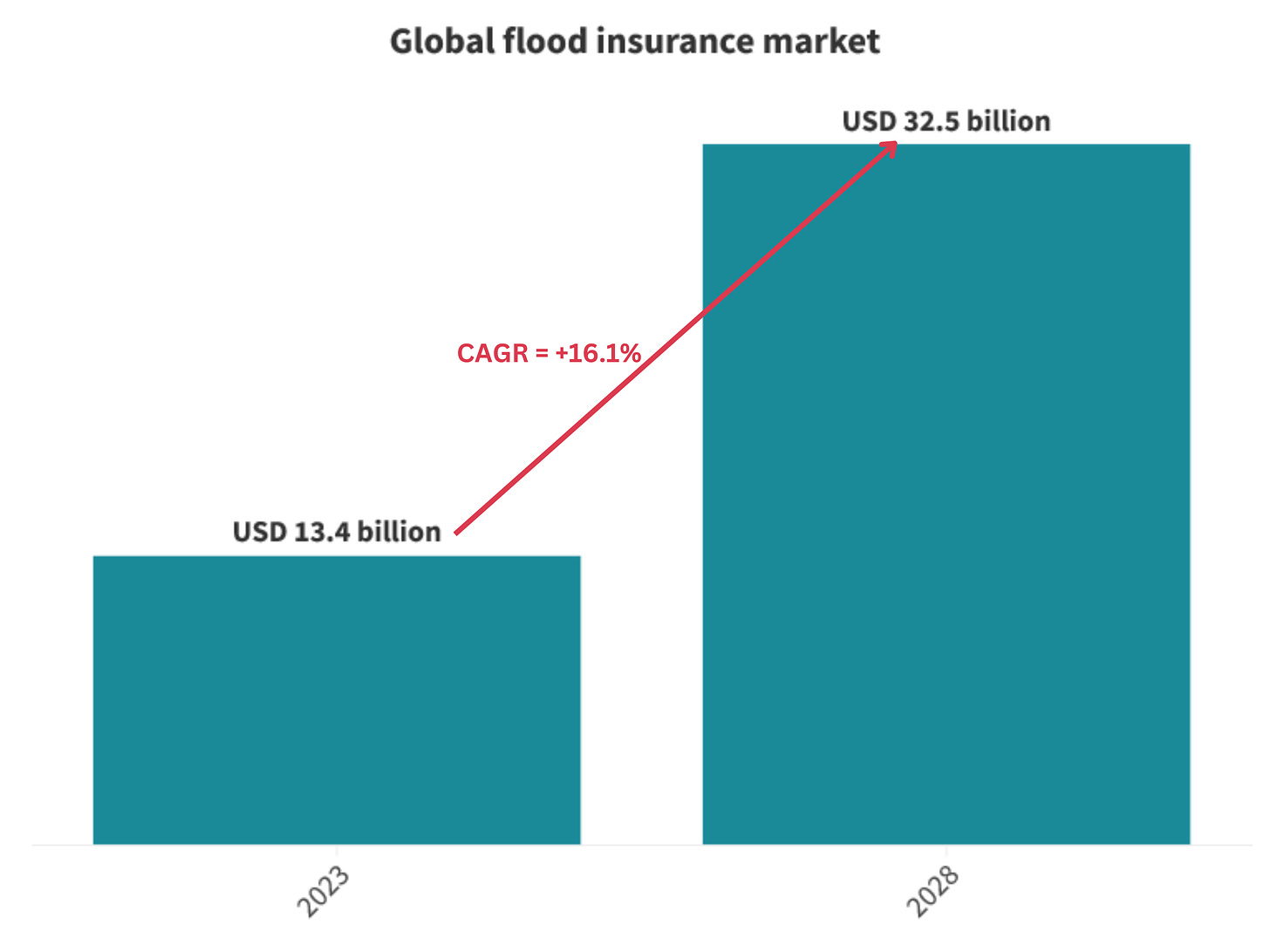
The devastating impact of climate change spares no one. Not only Europe, NASA cautions that cities along the western coast of the Americas may face high flood risks and this type of flooding is not common along the west coast outside of El Niño years.
However, by 2030, the combination of rising sea levels and climate change could influence them into an annual occurrence, regardless of El Niño's presence.



